Four Sanctuaries on the Corner of Wisconsin and Volta
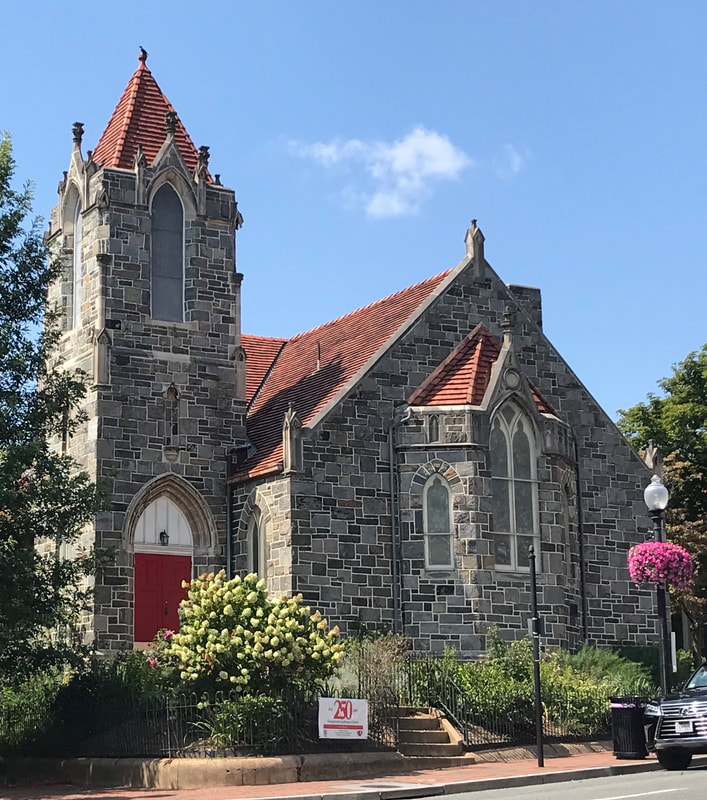
Our current sanctuary
Photo credit: Georgetown Lutheran Church
In 1769, the founders of Georgetown Lutheran Church set out to build a small log cabin church on the lot that had been allotted to them. Early congregation members were buried in the churchyard, as was the practice at the time. Around 1790, a steeple was added to the church with a bell.
But attendance was sparse, services were not held regularly, and soon the log building became dilapidated to the point that it fell down, and the graveyard was overrun with weeds. We know this from the 1829 Supreme Court case that involved GLC, although this is a story for another day…
Around 1835, the congregation was reinvigorated and built a new building to worship. This second sanctuary was a frame building. We do not have any pictures of this building in the church’s archives and could not find any in publications about nineteenth-century Georgetown. But we can imagine a modest structure, with wood siding and a small steeple.
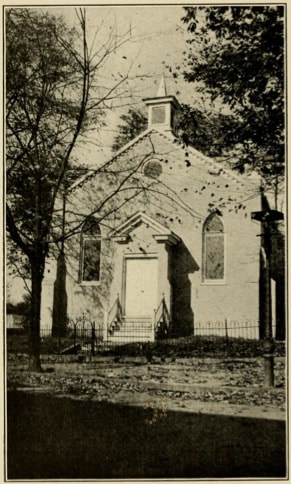
Picture of the 1867 sanctuary (from a history of the church published in 1909)
Photo credit: Georgetown Lutheran Church
Photo credit: Georgetown Lutheran Church
This second wood building only stood for about thirty years. In 1867, a third sanctuary was built, this time a one-story brick building. The church was larger than the previous ones, and housed a school until 1870. School was taught in German, but in 1870 the congregation decided to end the use of German language and close the school. Georgetown Lutheran Church was re-incorporated as an English-speaking church, and the congregation set out to renovate the sanctuary, install gas lighting, and repaint the building. A rededication ceremony took place in June 1870.
The congregation continued to grow, and many changes were made to the building around the turn of the twentieth century. The history of the church published in 1909, for our 140th anniversary, by Pastor Luther Hess Waring describes the following improvements:
“This included new flooring and carpet, new pulpit and chancel rail, new roof and metal ceiling, stained glass windows, removal of old gallery, outside vestibule built, church repaired inside and outside, cellar dug and furnace put in, new fence built, and electric lights introduced.”
According to oral tradition, we have retained some of the pews, the altar, and the Communion railing that were used in this third sanctuary.
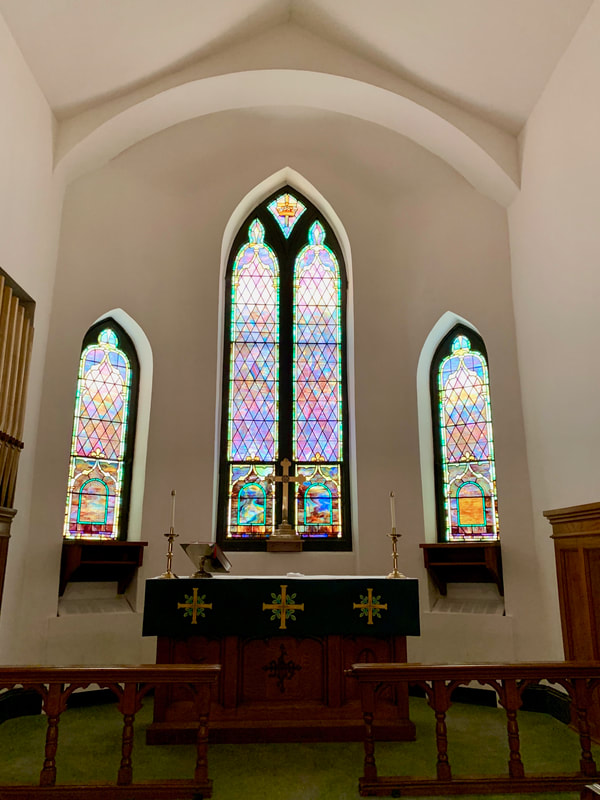
Altar and Communion railing
Photo credit: Georgetown Lutheran Church
Photo credit: Georgetown Lutheran Church
When Daniel Eli, a longtime member of the congregation, died in 1911, he bequeathed $50,000 to build a new church. The sanctuary was built of Potomac limestone and grey slate, with stained glass windows. The building was designed by the firm of Murphy and Olmsted, who were noted architects in the DC area and will be the subject of a later blog post. The National Archives have retained the original construction permit for the church, showing that it was built for $17,500 by the Melton Construction Company.
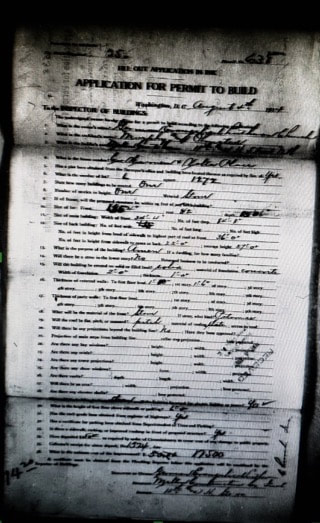
Original building permit for the current sanctuary
Photo credit: National Archives
Photo credit: National Archives
The building included a basement for Sunday School classes and offices. It was dedicated in January 1915, together with a new pulpit and baptismal font. In 1919, a Möller pipe organ was added at the front of the sanctuary. The Möller company was a renowned builder of pipe organs, located in Hagerstown, Maryland. They numbered each organ they built (about 250 a year), and the nameplate on GLC’s organ bears the number 2722.
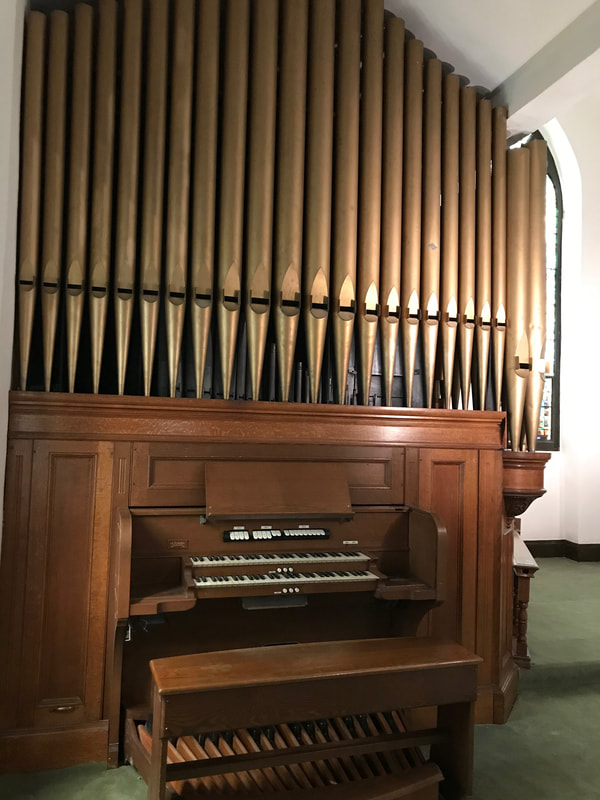
Möller organ at the front of the sanctuary, built in 1919, rebuilt in 1949
Photo credit: Georgetown Lutheran Church
Photo credit: Georgetown Lutheran Church
The Tiffany-style stained glass windows are one of the most striking features of the 1914 sanctuary. During the renovation of the church for our 250th anniversary, a group of volunteers took on the task of cleaning the windows from years of candle soot and grime, and the result was spectacular, revealing new colors and patterns in the glass. We know little about the origin of the windows, and they do not have a maker’s mark.
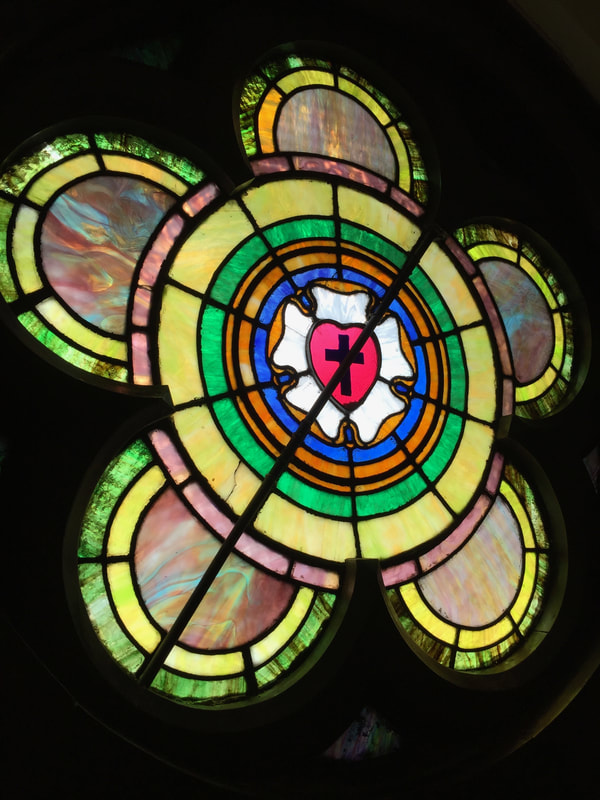
Close up of Martin Luther's seal at the top of one of the stained glass windows
Photo credit: Georgetown Lutheran Church
Photo credit: Georgetown Lutheran Church